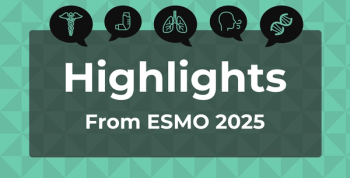
Price and Clinical Factors Impact Canadian Orphan Drug Recommendation Rates
In Canada, there exists no distinct regulatory or reimbursement pathway for orphan drugs. Instead, these products undergo the same review processes as any other drug. When a medicine is submitted for review, the Common Drug Review examines the clinical and economic evidence, and its expert committee issues a nonbinding positive or negative recommendation for listing on publicly funded drug plans.
Canada’s Common Drug Review (CDR), which provides recommendations on public payer reimbursement for all nononcology drugs, including orphan drugs, has been criticized for its negative recommendations on orphan drugs, which some say delay patients access. A study newly
In Canada, there exists no distinct regulatory or reimbursement pathway for orphan drugs. Instead, these products undergo the same review processes as any other drug. When a medicine is submitted for review, CDR examines the clinical and economic evidence, and its expert committee issues a nonbinding positive or negative recommendation for listing on publicly funded drug plans. Each Canadian jurisdiction, other than Quebec (which has its own review process), decides whether it will partake in collective product listing negotiations and whether to list the product on its local formulary. Historically, CDR has given positive recommendations to 52% of drugs (for comparison, Australia’s similar process recommends 54%, while the United Kingdom’s recommends 87%).
To evaluate CDR recommendations on orphan drugs, define the parameters involved in decision making, and compare recommendations with those made in comparable nations, the researchers gathered a list of orphan drugs from the Orphanet website and the FDA’s list of orphan drugs. They reviewed publicly available CDR recommendations and categorized the bases on which decisions for recommendation were made (clinical reasons only, price reasons only, or both clinical and price reasons).
In CDR data, 68 submissions were identified for 59 orphan drugs, with 9 drugs submitted for 2 indications each. In total:
- CDR gave positive recommendations to 43 (63.2%) of submissions
- 15 submissions were recommended on the basis of clinical parameters only
- 26 submissions were recommended on the basis of both clinical parameters and price
- 2 submissions were recommended on the basis of price only
The researchers also compared Canada’s rate of orphan drug recommendations for listing with those of similar territories:
- Quebec: 60%
- Scotland: 63.3%
- Australia: 92.7%
- New Zealand: 67.6%
Positive recommendation rates in Canada increased over time; from 2004 to 2009, 50% of submissions were recommended for listing, while in 2016, that rate increased to 86.7%. However, in 2016, 84.6% of recommendations were conditional on a price reduction; conditions stipulating such a reduction in cost increased 3.4-fold between 2012 and 2013.
For submissions reporting an incremental cost-utility ratio (ICUR), approval rates were highest when ratios were in the range of $50,000 (approximately $39,000 US dollars) to $100,000 (approximately $78,000 US dollars) per quality-adjusted life-year. However, in 2016, in 2016, there were 9 submissions with ICURs over $100,000 per QALY, and the recommendation rate for these submissions was 77.8% (all conditional on a reduction in price).
The researchers write that, for most orphan drugs, there exists a degree of uncertainty regarding efficacy, effectiveness, and safety (given small potential patient numbers for clinical trials), and thus “there was a low probability of a positive recommendation when CDR decisions were driven by clinical outcomes and where drug cost was not a major factor in the evaluation.” Orphan drugs had the highest positive recommendation rate when both clinical and price parameters were taken into consideration.
Reference
McCormick JI, Berescu LD, Tadros N. Common drug review recommendations for orphan drugs in Canada: basis of recommendations and comparison with similar reviews in Quebec, Australia, Scotland and New Zealand. Orphanet J Rare Dis. 2018;13(1)27. doi: 10.1186/s13023-018-0759-9.
Newsletter
Stay ahead of policy, cost, and value—subscribe to AJMC for expert insights at the intersection of clinical care and health economics.







































